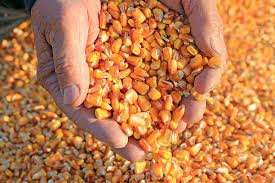Butter and Ghee Processing Operator

Introduction:
Butter and ghee, two popular dairy products, have been cherished for centuries for their culinary versatility and rich flavor. Behind the scenes of these beloved commodities lies a complex process of production, where skilled operators play a crucial role. In this article, we’ll delve into the world of butter and ghee processing, examining the responsibilities and expertise required of operators in this field.
Understanding Butter and Ghee Processing:
Butter and ghee, though distinct in their final forms, share a common starting point: cream obtained from milk. The process of transforming cream into butter and ghee involves several critical steps, including separation, clarification, and packaging.
- Cream Separation: The process begins with the separation of cream from milk, typically achieved through centrifugal force in modern dairy facilities. Skilled operators must ensure that the cream is of the desired quality and consistency before proceeding to the next stage.
- Churning: Churning is the process of agitating cream to separate the fat from the buttermilk. In the case of butter production, this step is essential for creating the characteristic texture and flavor. Operators monitor the churning process closely, adjusting parameters such as temperature and churn speed to achieve the desired outcome.
- Clarification: Once butter is formed, it undergoes a clarification process to remove excess moisture and impurities. This step is critical for enhancing the shelf life and stability of the final product. Skilled operators utilize various techniques, such as heating and filtering, to ensure the purity and quality of the clarified butter or ghee.
- Packaging: Packaging is the final step in butter and ghee processing, where operators must ensure proper labeling and adherence to safety regulations. Packaging materials must be selected carefully to preserve the freshness and integrity of the product during storage and transportation.
Roles and Responsibilities of Butter and Ghee Processing Operators:
Operators involved in butter and ghee processing play a multifaceted role that requires a combination of technical expertise, attention to detail, and a commitment to quality. Some of the key responsibilities include:
- Equipment Operation: Operators are responsible for operating and maintaining various pieces of equipment used in butter and ghee processing, such as cream separators, churns, and clarifiers. They must possess a thorough understanding of each machine’s functionality and be able to troubleshoot any issues that arise during operation.
- Quality Control: Ensuring the quality and consistency of the final product is paramount in butter and ghee processing. Operators are tasked with conducting regular quality control checks, including visual inspections, sensory evaluations, and laboratory tests, to verify that product specifications are met.
- Process Optimization: Continuous improvement is essential in dairy processing to maximize efficiency and minimize waste. Operators are actively involved in process optimization efforts, identifying areas for improvement and implementing solutions to enhance productivity and reduce costs.
- Safety and Hygiene: Maintaining a clean and safe working environment is crucial in dairy processing facilities to prevent contamination and ensure employee wellbeing. Operators must adhere to strict hygiene protocols and safety regulations at all times, including proper sanitation procedures and the use of personal protective equipment.
- Record-Keeping: Accurate record-keeping is essential for traceability and regulatory compliance in the dairy industry. Operators are responsible for documenting key process parameters, production volumes, and quality control data to facilitate tracking and analysis.

Training and Qualifications:
Becoming a skilled butter and ghee processing operator typically requires a combination of formal education, on-the-job training, and hands-on experience. While specific requirements may vary depending on the employer and location, some common qualifications include:
- High school diploma or equivalent
- Technical training in dairy processing or related field
- Knowledge of food safety and quality management systems (e.g., HACCP, ISO)
- Strong mechanical aptitude and troubleshooting skills
- Ability to work in a fast-paced environment with attention to detail
- Excellent communication and teamwork skills
Conclusion:
Butter and ghee processing is a fascinating blend of art and science, where skilled operators play a pivotal role in ensuring the quality and consistency of the final products. From overseeing equipment operation to conducting quality control checks, operators are integral to every stage of the production process. By mastering their craft and embracing continuous improvement, butter and ghee processing operators contribute to the success and sustainability of the dairy industr



